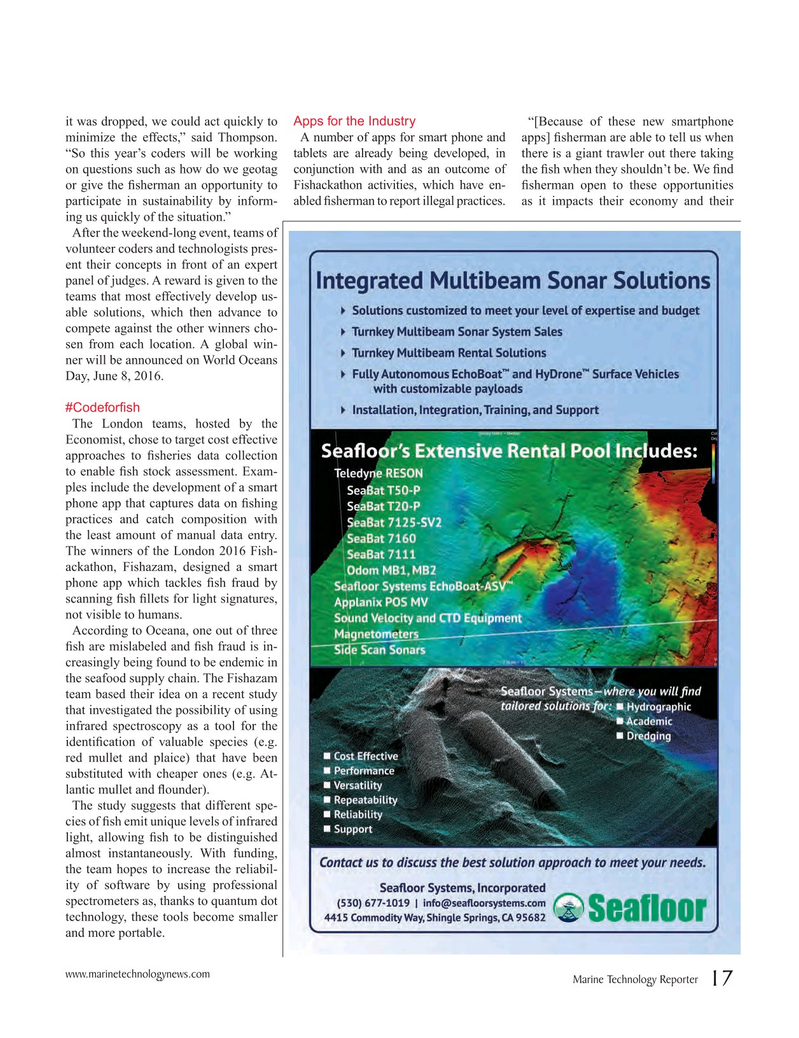
Page 17: of Marine Technology Magazine (June 2016)
Hydrographic Survey
Read this page in Pdf, Flash or Html5 edition of June 2016 Marine Technology Magazine
it was dropped, we could act quickly to Apps for the Industry “[Because of these new smartphone minimize the effects,” said Thompson. A number of apps for smart phone and apps] ? sherman are able to tell us when “So this year’s coders will be working tablets are already being developed, in there is a giant trawler out there taking on questions such as how do we geotag conjunction with and as an outcome of the ? sh when they shouldn’t be. We ? nd or give the ? sherman an opportunity to Fishackathon activities, which have en- ? sherman open to these opportunities participate in sustainability by inform- abled ? sherman to report illegal practices. as it impacts their economy and their ing us quickly of the situation.”
After the weekend-long event, teams of volunteer coders and technologists pres- ent their concepts in front of an expert panel of judges. A reward is given to the teams that most effectively develop us- able solutions, which then advance to compete against the other winners cho- sen from each location. A global win- ner will be announced on World Oceans
Day, June 8, 2016.
#Codefor? sh
The London teams, hosted by the
Economist, chose to target cost effective approaches to ? sheries data collection to enable ? sh stock assessment. Exam- ples include the development of a smart phone app that captures data on ? shing practices and catch composition with the least amount of manual data entry.
The winners of the London 2016 Fish- ackathon, Fishazam, designed a smart phone app which tackles ? sh fraud by scanning ? sh ? llets for light signatures, not visible to humans.
According to Oceana, one out of three ? sh are mislabeled and ? sh fraud is in- creasingly being found to be endemic in the seafood supply chain. The Fishazam team based their idea on a recent study that investigated the possibility of using infrared spectroscopy as a tool for the identi? cation of valuable species (e.g. red mullet and plaice) that have been substituted with cheaper ones (e.g. At- lantic mullet and ? ounder).
The study suggests that different spe- cies of ? sh emit unique levels of infrared light, allowing ? sh to be distinguished almost instantaneously. With funding, the team hopes to increase the reliabil- ity of software by using professional spectrometers as, thanks to quantum dot technology, these tools become smaller and more portable.
www.marinetechnologynews.com
Marine Technology Reporter 17
MTR #5 (1-17).indd 17 6/2/2016 10:53:48 AM

 16
16

 18
18
